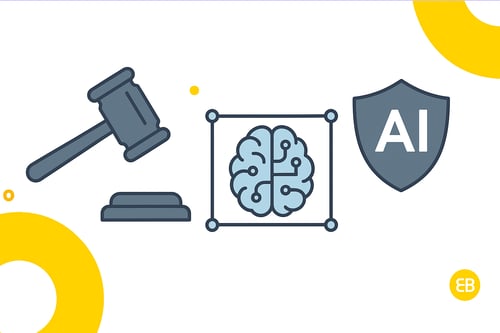AI Governance: Principles, Challenges, and Best Practices

AI Governance is the set of frameworks, policies, and day-to-day practices that make sure artificial-intelligence features are built and used responsibly, ethically, and legally. In app development, good governance shapes how you collect data, train models, test for bias, and monitor production outcomes—protecting users and your brand.
Why AI Governance Matters
One small governance lapse can erode trust or trigger heavy fines. Here’s why strong AI Governance is a must:
-
Builds user trust – Shows you care about fair, accountable algorithms.
-
Reduces legal risk – Aligns you with the EU AI Act, GDPR, and coming regulations.
-
Mitigates bias – Formal checks stop discriminatory outcomes before they reach users.
-
Boosts transparency – Clear audit trails explain how decisions were made.
-
Supports sustainability – Encourages energy-efficient models and data practices.
When to Use AI Governance
You’ll want to apply AI Governance when:
-
Scoping out chatbots, recommendation engines, or any machine-learning (ML)-driven feature.
-
Drafting privacy policies or data-processing agreements.
-
Preparing a compliance checklist for an upcoming release.
-
Reviewing model outputs for bias or disparate impact.
-
Setting up dashboards that track model drift and accuracy over time.
Real-World Example
For a fintech client, EB Pearls embedded an AI Governance playbook that logged every credit-scoring decision and surfaced fairness metrics in real time. The client passed a third-party compliance audit and, more importantly, saw a 12 % rise in user trust scores after adding an “Explain My Score” button powered by our governance layer.
Founder Insight
Treat AI Governance like DevOps for ethics: automate as much as possible. Lint your training data for bias, run nightly fairness tests, and alert on drift just as you would on CPU spikes. The earlier you wire this in, the cheaper—and safer—it is.
Key Metrics & Concepts
| Concept | What It Answers |
|---|---|
| Fairness Score | Are outcomes consistent across user segments? |
| Explainability Index | Can a non-expert understand why the model decided X? |
| Compliance Coverage | Which AI regulations or standards are met? |
| Audit Log Completeness | Do we have a trace of every model version and decision? |
| Model Drift Rate | How quickly is accuracy degrading in production? |
Tools & Technologies
-
IBM Watson OpenScale – Monitors bias, drift, and compliance in deployed models.
-
Google Cloud Vertex AI – Offers model registries, lineage tracking, and explainable AI.
-
Azure Responsible AI Dashboard – Visualises fairness, causality, and error analysis.
(Pro tip: start with your cloud provider’s built-in tools before layering on bespoke solutions.)
What’s Next?
Global regulations—led by the EU AI Act—are pushing transparency and accountability from “nice to have” to legal mandate. Expect standardised frameworks (think ISO for AI) and plug-and-play governance APIs that slot into your CI/CD pipeline.
Related Terms
Helpful Resources
-
EB Pearls Blog: AI Governance 101 – A Startup-Friendly Playbook
-
EB Pearls Blog: Building Trust: How to Bake Ethical AI into Your App Roadmap
- EB Pearls Blog: AI-Driven Personalisation: Boost Engagement, Retention, and Revenue
Need help Embedding AI Governance into Your Roadmap?
Not sure where AI Governance fits in your roadmap? Book a discovery call with EB Pearls and we’ll show you how to embed ethics and compliance from sprint one.